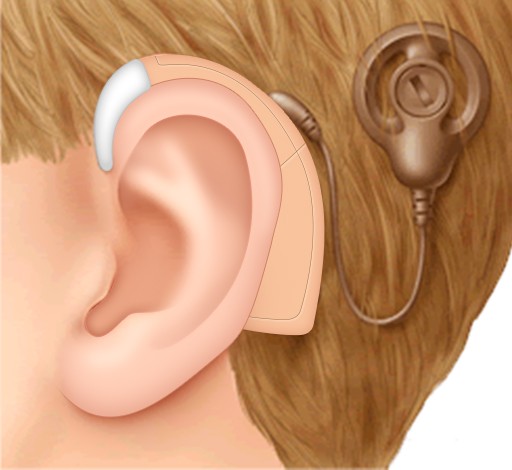Correct understanding of bone conduction hearing aids
Under normal conditions, we listen to the sound in at least two ways: the bone conduction method and the air conduction method.
The so-called bone conduction mode is a sound signal vibrating the skull, which is not directly transmitted to the inner ear through the outer ear and the middle ear; and the air conduction mode means that the sound is transmitted to the inner ear through the outer ear and the middle ear. The latter is dominant in both ways.
In general, what we call cassette, behind-the-ear, and in-ear are all air-guided hearing aids. The air conduction type hearing aid transmits the amplified sound signal to the external auditory canal. The bone conduction hearing aid is different. Strictly speaking, the bone conduction hearing aid ultimately produces not a sound signal but a vibration signal. The bone conduction hearing aid does not have a so-called "headphone" or earplug, but instead is an oscillator that produces a vibration signal. The oscillator is pressed against the mastoid bone that protrudes behind the ear. The vibration of the oscillator causes the skull to oscillate and the signal crosses the outer ear and the middle ear. The advantage of the bone conduction hearing aid is here - directly transmitted to the inner ear . Because of this advantage, in theory, bone conduction hearing aids are particularly suitable for patients with conductive sputum (ie, patients with external and middle ear problems).
However, this is not the case. The bone conduction hearing aid is far less effective than imagined. the reason is:
First, the bone conduction hearing pattern is far less effective than the air conduction method;
Secondly, the output device of the bone conduction hearing aid - the oscillator is not only extremely unattractive, but also extremely uncomfortable and difficult to be accepted by the user.
In general, we only recommend patients with bone conduction hearing aids in the following situations: external ear canal malformations or repeated episodes of external and middle ear infections, and can not be worn with earplugs, ear molds or in-the-ear hearing aids. In addition to all other situations, or as long as the use of air conduction hearing aids should first use air conduction hearing aids.
Tip: The use of bone conduction hearing aids is extremely rare, and the hearing aid effect is extremely limited, so the bone conduction hearing aid is almost extinct. However, it is easy to make them confused because they are almost extinct and are not deaf or understood. In recent years, the effect of bone conduction hearing aids has been over-promoted a lot, and there is a tendency to take a head in the near future. We must have a correct understanding of this.

category
